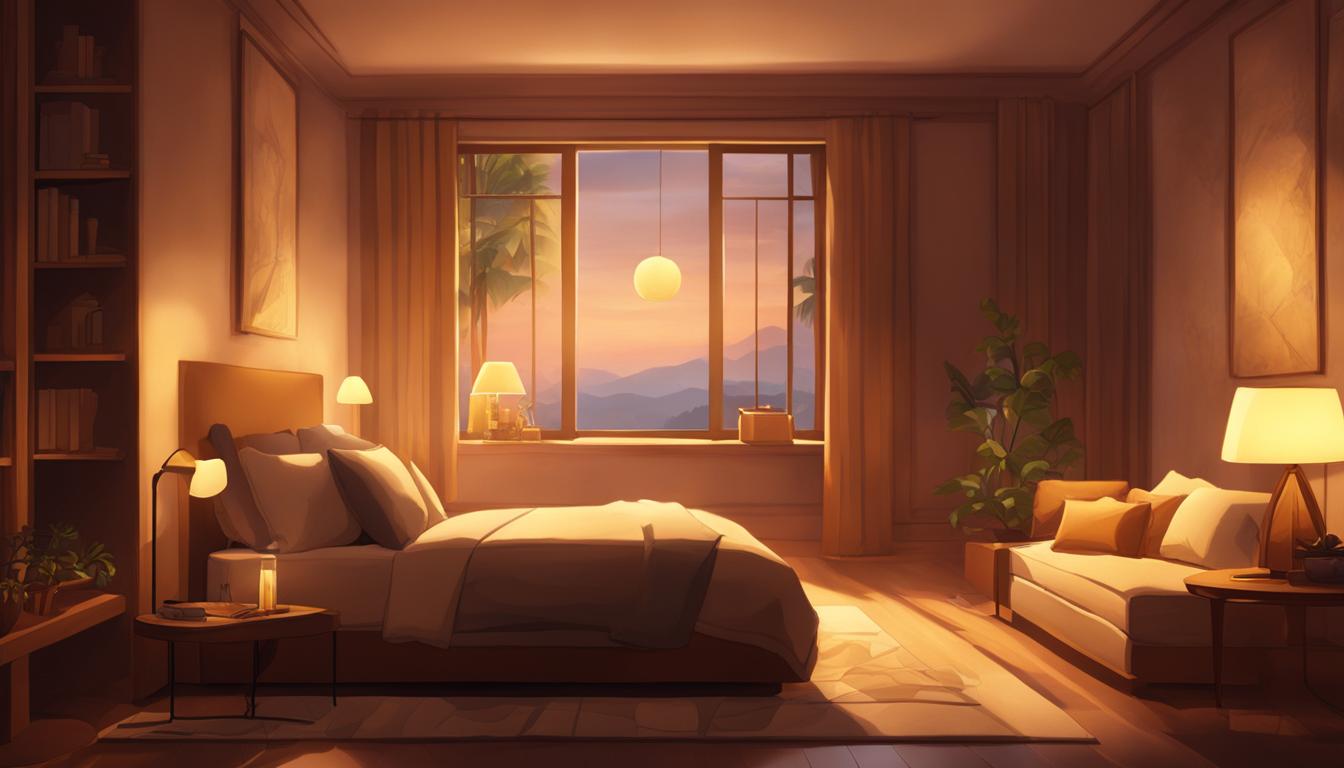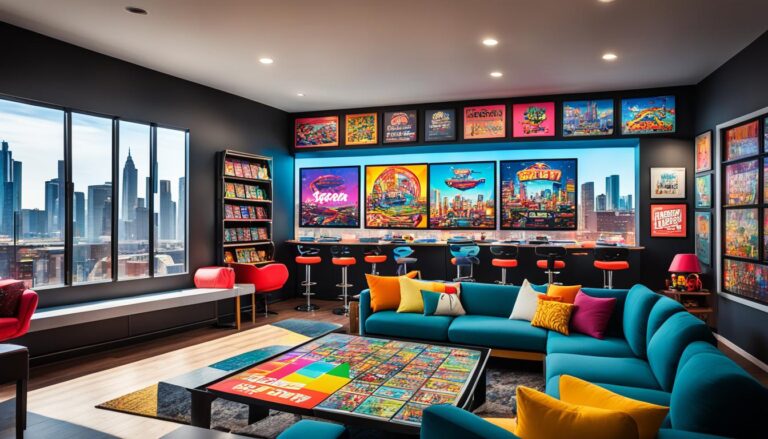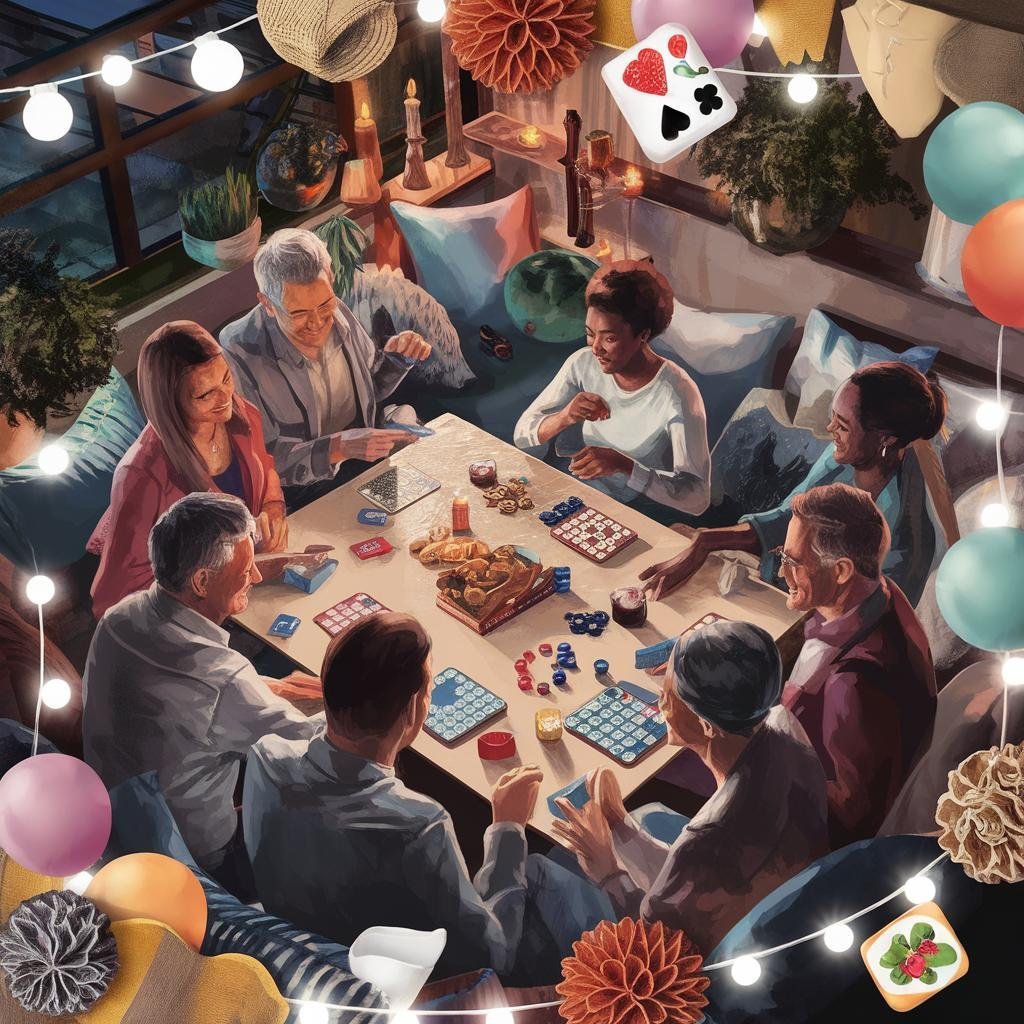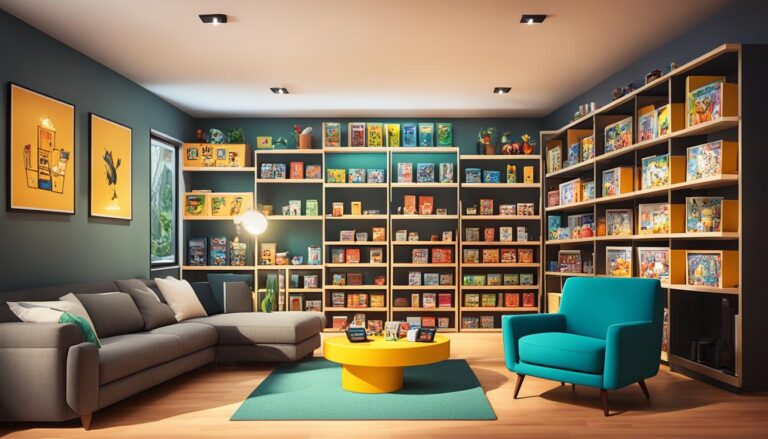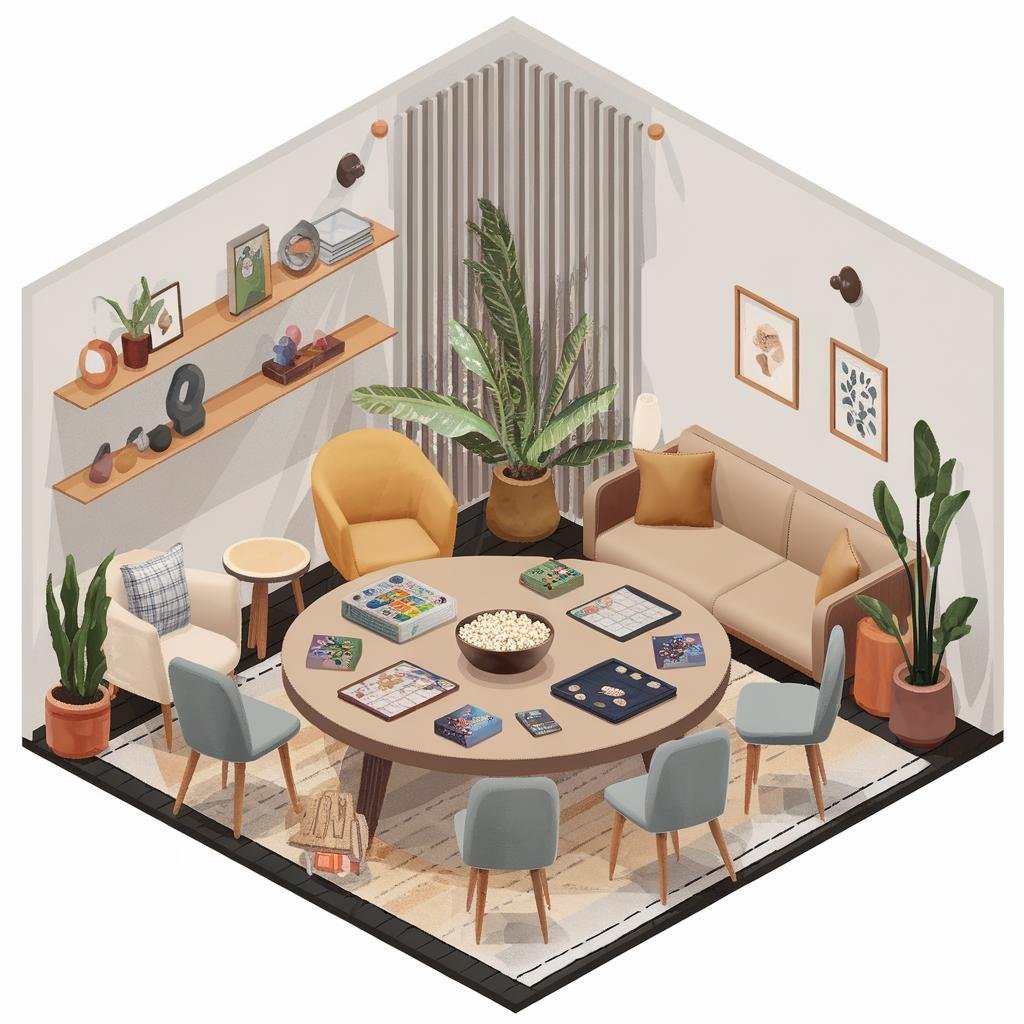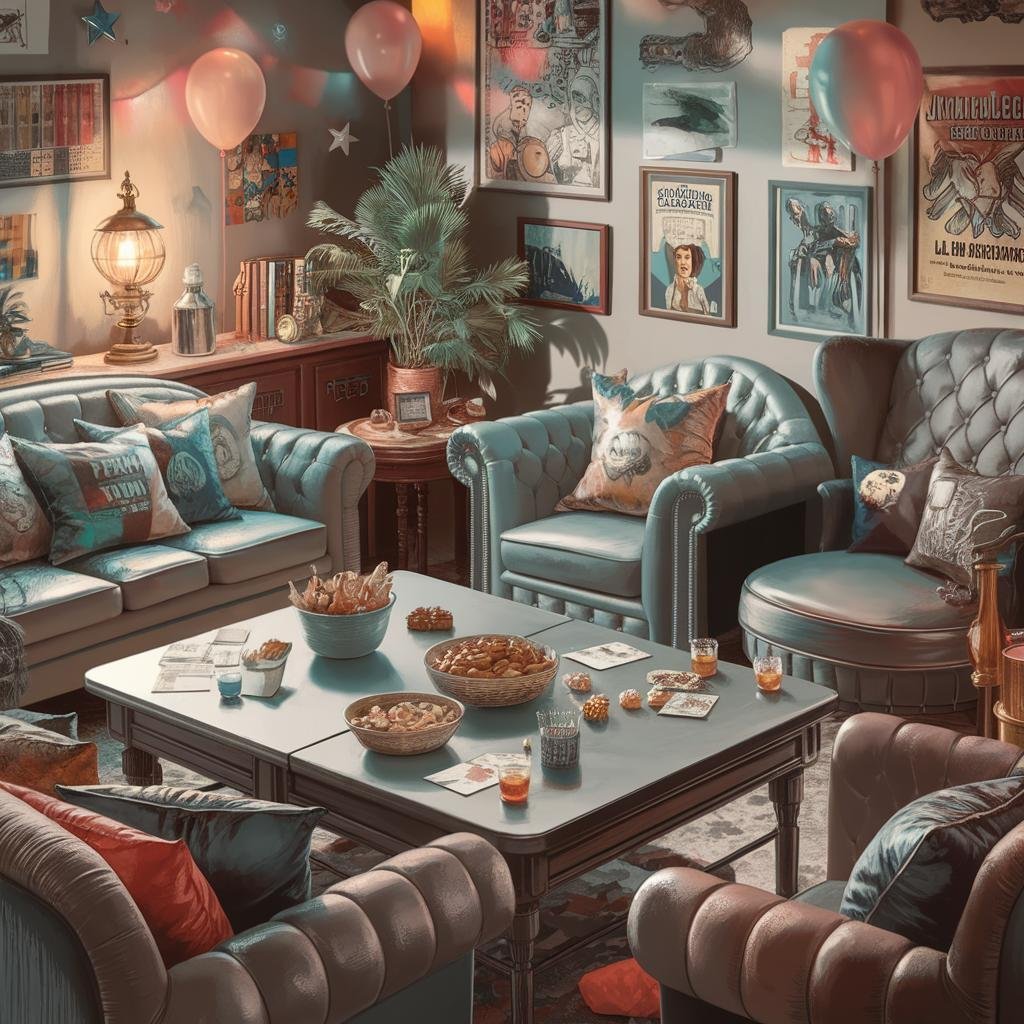Disclosure: This Post Contains Affiliate Links; We earn a commission on purchases.
Lighting is an art form that can transform any space into a haven of desired mood and atmosphere. It has the power to influence our emotions and enhance our experiences. Whether you’re looking to create a cozy and relaxing ambiance, an energizing and vibrant atmosphere, or anything in between, understanding the art of lighting design is crucial.
In this article, we’ll explore the various elements and techniques that can help you create the perfect mood with lighting. From selecting the right lighting elements to harnessing the play of light and shadow, we’ll guide you through the process of curating your ideal ambiance. Let’s dive in!
Key Takeaways:
- Lighting is a powerful tool that can significantly influence the ambiance and mood of any space.
- Understanding the art of creating the perfect mood with lighting involves selecting the right lighting elements, considering color temperature, utilizing dimmers and layering techniques, and embracing natural light.
- Personalizing and adapting lighting to different scenarios, harmonizing with decor, and mindful placement of lighting fixtures are key factors in creating the desired atmosphere.
- Smart lighting systems offer a seamless way to personalize and control lighting effortlessly.
- By harmonizing lighting with the overall decor, you enhance both the mood and aesthetic appeal of a space.
Table of Contents
Choosing the Right Lighting Elements
The foundation of creating the perfect mood with lighting lies in selecting the appropriate lighting elements. Understanding the different types of lighting, such as ambient, task, and accent lighting, is essential in achieving the desired atmosphere.
Ambient lighting provides overall illumination, ensuring that the space is well-lit and comfortable. It sets the foundation for other lighting techniques and is often achieved through fixtures such as chandeliers, ceiling-mounted lights, or wall sconces.
Task lighting serves functional purposes and is focused on specific areas where activities like reading, cooking, or working take place. This type of lighting can be accomplished with desk lamps, under-cabinet lighting, or adjustable spotlights.
Accent lighting is used to highlight specific features or create visual interest. It adds depth and drama to a space by drawing attention to art pieces, architectural details, or decorative elements. Track lighting, recessed spotlights, or wall washers are commonly used for accent lighting.
By combining these lighting elements, you can create a harmonious and dynamic environment that sets the desired mood. Whether it’s a cozy and intimate atmosphere or a vibrant and energetic ambiance, the right lighting elements play a crucial role in achieving the perfect mood.
Decorative Lighting: Adding Style and Personality
In addition to the functional aspects, lighting fixtures themselves can be a form of decorative art. They add style, personality, and a touch of elegance to a space. Choose fixtures that complement the overall design aesthetic and contribute to the desired mood.
“Lighting fixtures are like jewelry for your home. They can transform a space and become a beautiful focal point,” says interior designer Emily Johnson.
Explore different options such as pendant lights, chandeliers, wall-mounted fixtures, or table lamps to find the ones that resonate with your style and enhance the ambiance you wish to create.
Comparison of Lighting Elements
| Type of Lighting | Purpose | Examples |
|---|---|---|
| Ambient Lighting | Provide overall illumination | Chandeliers, ceiling-mounted lights, wall sconces |
| Task Lighting | Light specific areas for functional activities | Desk lamps, under-cabinet lighting, adjustable spotlights |
| Accent Lighting | Highlight specific features or create visual interest | Track lighting, recessed spotlights, wall washers |
Table: Comparison of Lighting Elements
Choosing the right lighting elements is the first step in creating the perfect mood with light. Understanding the distinct purposes of ambient, task, and accent lighting, and how they work together, allows you to transform your living spaces into havens of personalized and enchanting illumination.
The Spectrum of Color Temperature: Crafting Emotional Resonance
Color temperature is a key factor in designing lighting that evokes specific emotional responses. By understanding the impact of different color temperatures, you can create a desired atmosphere and enhance the overall mood of a space.
Warm tones, with color temperatures ranging from 2700K to 3000K, create a cozy and relaxed ambiance. These hues are perfect for spaces where comfort and tranquility are desired, such as bedrooms or living rooms. The soft glow of warm light provides a soothing effect, inviting relaxation and a sense of intimacy.
On the other hand, neutral white light, with color temperatures around 3500K to 4000K, is ideal for areas where clarity and visibility are essential, such as kitchens or workspaces. This type of lighting offers a crisp and natural illumination, ensuring efficient task performance while maintaining a neutral atmosphere.
Cool white light, typically ranging from 5000K to 6500K, offers a contemporary and energetic vibe. This lighting temperature is often used in professional settings or areas where a sense of alertness and focus is required, such as offices or retail spaces. The bright and cool-toned light creates a vibrant environment that stimulates productivity and creates a sense of vitality.
“Crafting emotional resonances through lighting involves a careful consideration of color temperature. Warm tones invite coziness and relaxation, while neutral and cool tones offer clarity and energy. By harnessing the power of color temperature, you can shape the emotional ambiance of any space.”
By thoughtfully selecting the color temperature of your lighting fixtures, you can create emotional resonances that align perfectly with the desired mood and atmosphere. The interplay between warm, neutral, and cool tones allows you to craft unique experiences in each space, enhancing the overall ambiance of your home or workplace.
Dimmers and Layering: Tailoring Intensity to Desired Effects
Creating the perfect mood with lighting involves more than just selecting the right fixtures. It’s all about controlling the intensity of light to achieve the desired effects. Dimmers and layering techniques play a crucial role in this process, allowing you to customize the lighting experience according to your preferences.
Dimmers:
Dimmers are a game-changer when it comes to setting the mood. They offer control over the brightness of lighting fixtures, allowing for gradual transitions and dynamic atmospheres. With dimmers, you can easily adjust the intensity of light to create a cozy ambiance or a vibrant setting depending on the occasion. Whether you’re having a romantic evening at home or hosting a lively gathering, dimmers give you the flexibility to tailor the lighting to your desired level of brightness.
Layering:
Layering lighting sources is another technique that adds depth and dimension to your space. By combining different types of lighting, such as ambient, task, and accent lighting, you can create multi-dimensional spaces with varying intensities of light. For example, you can use recessed lights for ambient lighting, pendant lights for task lighting, and wall sconces for accent lighting. By strategically placing these fixtures and adjusting their brightness, you can create a layered lighting effect that enhances the overall atmosphere.
Layering also allows you to highlight specific areas or objects in a room. By directing focused light on a particular feature, such as a piece of artwork or a focal point, you can draw attention to it and create visual interest. This technique adds a touch of drama and sophistication to your space, elevating the overall ambiance.
“Dimmers and layering techniques help you transform your space into a versatile canvas, allowing you to tailor the lighting intensity to suit your desired effects.” – Lighting Design Expert
Experimenting with different layering combinations and dimmer settings is key to finding the perfect balance and achieving the desired lighting intensity. It’s a creative process that allows you to fully personalize your lighting design and make it a true reflection of your style and mood.
With dimmers and layering techniques, you have the power to transform any space into a haven that evokes the desired ambiance. Whether you want a cozy and intimate atmosphere or a bright and energizing environment, these methods give you the flexibility to tailor the lighting intensity to suit your mood. It’s all about creating a dynamic lighting experience that enhances your daily life and uplifts your spirits.
The Play of Shadows: Using Light and Shadow for Drama
The interplay of light and shadow is a powerful technique that can add depth, texture, and a sense of mystery to any space. By strategically using light and shadow, you can enhance the overall mood and create a dramatic ambiance that captivates the senses.
One way to achieve this effect is through the use of interesting patterns and designs in lighting fixtures. Unique fixtures with intricate cutouts or shapes can create mesmerizing shadow patterns on the walls and ceilings, instantly transforming the space into a work of art. The interplay between these shadows and the surrounding light creates a visual spectacle that brings drama and intrigue to the room.
Another method is to cast captivating shadows across the room intentionally. By placing objects in front of light sources, such as lamps or candles, you can create intriguing silhouettes on the walls, floor, or ceiling. These shadows add visual interest and a touch of mystique, inviting the imagination to wander and creating an environment that sparks conversations and ignites creativity.
The strategic use of light and shadow can offer a multitude of lighting effects, each conveying a unique atmosphere:
- Soft and gentle shadows: Cast by diffused light sources, they create a cozy and intimate ambiance, perfect for relaxation and unwinding after a long day.
- Strong and bold shadows: Created with directional lighting, they add a sense of drama and intensity, ideal for creating a focal point or highlighting specific elements in the room.
- Flickering and dancing shadows: Produced by flames or moving light sources, they evoke a sense of movement and energy, infusing the space with a dynamic and lively atmosphere.
By leveraging the contrast between light and darkness, you can introduce an air of sophistication and elegance to your space. Experiment with different lighting angles, play with light fixtures that cast intriguing shadows, and observe how these elements transform the mood and atmosphere of your environment.
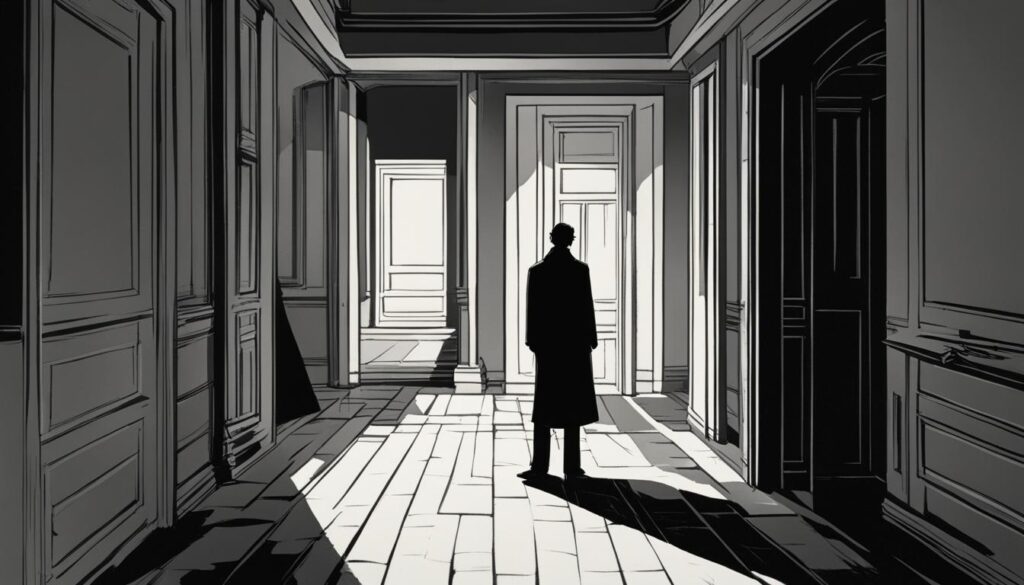
The image above exemplifies the use of light and shadow to create a dramatic ambiance. Notice how the interplay between the light and darkness enhances the visual appeal and adds depth to the composition. By incorporating these techniques into your lighting design, you can elevate the atmosphere of your space and create a captivating environment that leaves a lasting impression.
Nature’s Influence: Embracing Natural Light for Versatility
While artificial lighting is essential for creating a positive ambiance, the benefits of natural light cannot be understated. The beauty of natural light lies in its ability to infuse a space with dynamic qualities that evolve throughout the day, from the gentle morning glow to the warm hues of sunset. Incorporating ample windows and strategically placing mirrors to reflect natural light can seamlessly merge indoor and outdoor spaces, blurring the boundaries between nature and your interior. This integration promotes a sense of well-being and connection to the environment, enhancing the overall mood of your space.
To fully embrace natural light, consider the following tips:
- Maximize daylight: Design your space to maximize the entrance of natural light through windows, skylights, or light tubes. This not only provides an abundance of light but also reduces the need for artificial lighting during daylight hours.
- Use light-filtering materials: Opt for sheer curtains or blinds that allow natural light to filter through while maintaining privacy and controlling glare.
- Strategic mirror placement: Position mirrors opposite windows to reflect and amplify natural light throughout the room. This technique can create a brighter and more spacious feel.
- Showcase outdoor views: Arrange your furniture and decor to take advantage of beautiful outdoor views visible through windows or glass doors. This not only enhances the natural light but also brings the soothing qualities of nature indoors.
“Natural light illuminates spaces in a way that artificial lighting cannot replicate. It adds a touch of warmth, freshness, and positivity to any room.”
By embracing natural light, you create a versatile ambiance that adapts to the changing light throughout the day. The interplay of sunlight and shadows adds depth and dimension, creating a visual feast for the eyes. Natural light also has a positive impact on our well-being, promoting feelings of happiness and productivity.
“I love how natural light transforms my home. It creates a welcoming and uplifting atmosphere that positively influences my mood and overall well-being.” – Rachel, homeowner
Personalization and Flexibility: Adapting Lighting to Different Scenarios
When it comes to creating the perfect mood with lighting, one size does not fit all. Thankfully, smart lighting systems provide a revolutionary solution that allows for personalized and effortless control over your lighting. With the touch of a button or a simple voice command, you can transform a room to suit different scenarios and moods.
Smart lighting solutions offer a spectrum of colors and customizable schedules, giving you the freedom to mimic natural light patterns and effortlessly transition through different lighting intensities. Whether you want a bright and energizing ambiance for a social gathering or a warm and cozy atmosphere for a relaxing evening, smart lighting puts the power in your hands.
Imagine coming home from a long day at work and being able to create the perfect calming environment with just a few taps on your smartphone. Or hosting a dinner party and effortlessly adjusting the lighting to set the mood for each course. With smart lighting systems, the possibilities are endless and the control is completely personalized to your preferences.
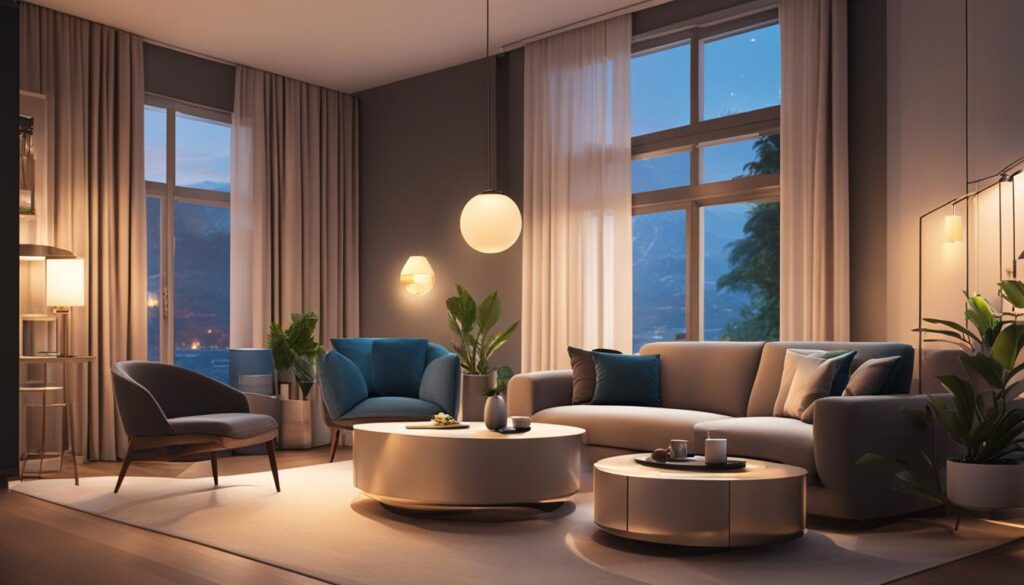
“Smart lighting systems offer a customizable lighting experience that adapts to your needs, helping you set the perfect mood for any occasion.”
Harmonizing with Décor: Lighting as an Artistic Element
When it comes to creating a visually stunning and cohesive design, lighting can be approached as an artistic element that harmonizes with the overall decor of a space. Lighting fixtures themselves can serve as statement pieces, blending functionality with artistic expression.
By carefully selecting lighting fixtures that complement the textures, colors, and style of your furniture and accessories, you can create a visually pleasing environment that exudes a sense of unity and balance. The materials and finishes of the lighting fixtures can echo the aesthetic qualities found in the surrounding decor, creating a cohesive and visually appealing atmosphere.
Whether you choose sleek and modern fixtures to complement a contemporary space or opt for ornate and vintage-inspired designs to add a touch of elegance, incorporating lighting as an artistic element elevates the overall mood and aesthetic appeal of a room.
Integrating lighting into the broader artistic narrative of a space brings a sense of intentionality and attention to detail. Consider the placement of lighting fixtures to highlight architectural features or artwork, creating focal points and directing focus. Artfully coordinating the lighting design with the decor enhances the overall ambiance and ensures a cohesive and visually pleasing environment.
When designing a space, it’s important to view lighting as more than just a functional necessity. By recognizing lighting as an artistic element, you can create a truly immersive and visually stunning experience that enhances the overall mood and aesthetic appeal of your space.
Conclusion
Creating the perfect mood in your home is achievable through the art of lighting and ambiance. By understanding the key factors involved, such as choosing the right lighting elements, embracing color temperature, utilizing dimmers and layering techniques, playing with light and shadow, and integrating natural light, you can curate an environment that enhances your daily experiences and uplifts your spirits.
Personalization and adaptability are crucial, and this is where smart lighting systems come into play. With the ability to customize colors, schedules, and intensity, you can effortlessly transform your space to suit different scenarios and moods. By harmonizing your lighting choices with your decor, you can create a cohesive and visually pleasing environment that enhances both the mood and aesthetic appeal.
Whether you’re seeking a relaxing haven, a productive work area, or any other desired atmosphere, proper lighting design is the key. By mastering the techniques discussed in this article, you can transform your home into a personalized sanctuary that reflects your unique style and sets the perfect mood for any occasion.
FAQ
What are some key factors to consider when creating the perfect mood with lighting?
Choosing the right lighting elements, understanding color temperature, utilizing dimmers and layering techniques, playing with light and shadow, embracing natural light, personalizing and adapting lighting, harmonizing with decor, and mindful placement are all key factors in creating the perfect mood with lighting.
What types of lighting elements should I consider?
When creating the perfect mood with lighting, it’s important to consider ambient lighting for overall illumination, task lighting for functional purposes, and accent lighting to highlight specific features. By combining these elements, you can create a harmonious and dynamic environment that sets the desired mood.
How does color temperature affect the mood created by lighting?
Color temperature plays a vital role in evoking emotional responses through lighting. Warm tones create a cozy and relaxed atmosphere, while neutral white light is ideal for areas where clarity is essential. Cool white light offers a contemporary and energetic vibe. By thoughtfully selecting color temperatures, you can craft emotional resonances that align with the desired mood and atmosphere.
How can I control the intensity of lighting to create the perfect mood?
Dimmers offer control over the brightness of lighting fixtures, allowing for gradual transitions and dynamic atmospheres. Layering lighting sources further enhances mood manipulation, creating multi-dimensional spaces that can be adapted to different needs. By experimenting with different layering combinations and dimmer settings, you can customize the lighting experience according to the desired mood.
How can I use light and shadow to create a dramatic effect?
The interplay of light and shadow adds depth, texture, and a sense of mystery to any space, enriching the overall mood. Strategic use of shadows can be achieved through interesting patterns and designs in lighting fixtures or by casting captivating shadows across the room. By leveraging the contrast between light and darkness, you can introduce an air of sophistication and elegance to your space.
How does natural light contribute to the ambiance of a space?
While artificial lighting is essential, natural light offers numerous benefits in creating a versatile ambiance. Sunlight infuses a space with dynamic qualities that evolve throughout the day, ranging from gentle morning glow to warm sunset hues. Incorporating ample windows and strategically placing mirrors to reflect natural light can seamlessly merge indoor and outdoor spaces. Natural light promotes a sense of well-being and connection to the environment, enhancing the overall mood of a space.
How can smart lighting systems enhance the personalization and control of lighting?
One size does not fit all when it comes to creating the perfect mood with lighting. Smart lighting systems offer a revolutionary way to personalize and control lighting effortlessly. With the touch of a button or a voice command, you can transform a room to suit different scenarios and moods. Smart lighting solutions provide a spectrum of colors and customizable schedules, allowing you to mimic natural light patterns and effortlessly transition through different lighting intensities.
How can lighting harmonize with the overall decor of a space?
Lighting can be approached as an artistic element that harmonizes with the overall decor of a space. Fixtures themselves can serve as statement pieces, blending functionality with artistic expression. The materials and finishes of lighting fixtures can echo the textures and colors found in furniture and accessories, creating a cohesive and visually pleasing environment. By integrating lighting into the broader artistic narrative of a space, you enhance both the mood and aesthetic appeal.

As the founder of Friends Game Night, Ryan channels his enthusiasm for gaming into a platform that celebrates the magic of gathering friends around the digital or physical tabletop. Through his website, Ryan shares insightful articles, reviews, and recommendations, aiming to inspire others to create their own memorable gaming moments.
Subscribe to Our Newsletter

